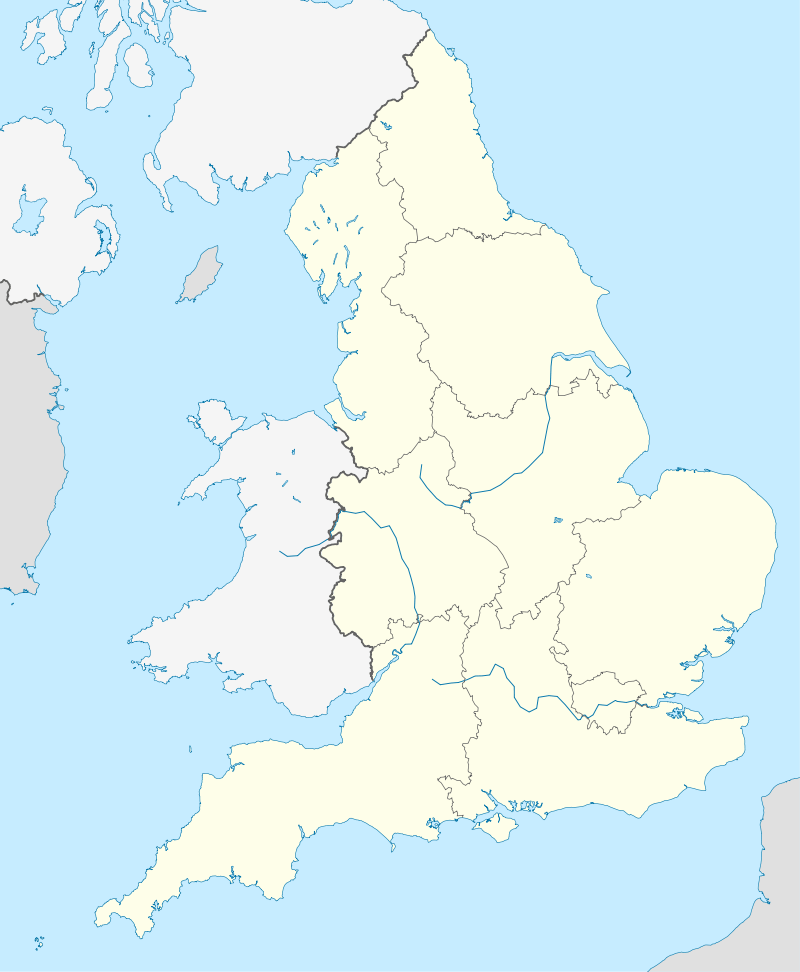Ring of Silvianus

The Vyne Ring or the Ring of Silvianus is a gold ring, dating probably from the 4th century, discovered in a ploughed field near Silchester, in Hampshire, England, in 1785. Originally the property of a British Roman called Silvianus, it was apparently stolen by a person named Senicianus, upon whom Silvianus called down a curse.
After its discovery in the 18th century, the ring became the property of the Chute family, whose country house was The Vyne, also in Hampshire, now a National Trust property. The ring went on display there in April 2013.[1]
In 1929, during excavations of the site of the Roman temple of Nodens at Lydney Park, the archaeologist Sir Mortimer Wheeler discovered details of the curse. As Wheeler consulted with J. R. R. Tolkien on the name of the god invoked in the curse, the ring and curse may have inspired the One Ring in The Hobbit and The Lord of the Rings.[1][2]
Description
The Ring of Silvianus is larger than most rings, being 25 mm (1 in) in diameter and weighing 12 g (0.4 oz), and was perhaps intended to be worn over a glove.[3] The band of the ring has ten facets. It is set with a square bezel engraved with an image of the goddess Venus.[4] To one side are the letters "VE" and to the other side "NVS", in mirror writing. When used as a signet ring to make a seal, the head and script would be raised, and the letters would appear the right way around.
The band is inscribed with the words "SENICIANE VIVAS IIN DE". This contains two errors as the "I" has been doubled, leaving no room for the last letter "O". The inscription should have finished "VIVAS IN DEO" — a common inscription for Roman Christians, meaning "live in God".[5]
History

The Ring of Silvianus was discovered in 1785 in the field of a farm near Silchester, a town of Roman origins, and the site of many archaeological discoveries.[3] It is unknown how the ring came to be located at The Vyne, but it is presumed that the farmer who found the ring sold it to the family, who were known to have an interest in history and antiquities.[1] In 1888, the owner of the property, Chaloner Chute, wrote about the ring in a history of the house.[3]
In the early 19th century a lead plaque of a type known as a "curse tablet" or defixio was discovered at the site of a Roman temple dedicated to the god Nodens at Lydney, Gloucestershire, 80 miles (130 km) from The Vyne.[6] The plaque was inscribed with a curse:
- DEVO NODENTI SILVIANVS ANILVM PERDEDIT DEMEDIAM PARTEM DONAVIT NODENTI INTER QVIBVS NOMEN SENICIANI NOLLIS PETMITTAS SANITATEM DONEC PERFERA VSQVE TEMPLVM DENTIS
This translates as
- For the god Nodens. Silvianus has lost a ring and has donated one half [its worth] to Nodens. Among those named Senicianus permit no good health until it is returned to the temple of Nodens.[6]
In 1929, the archaeologist Sir Mortimer Wheeler was excavating at the Lydney site and made a connection between the ring bearing the name of Senicianus, and the curse stone bearing the same name.[3] Wheeler called upon Tolkien, as Professor of Anglo-Saxon at Oxford University, to investigate the etymology of the name "Nodens" referred to in the curse.[3][4]
Until recently the Ring of Silvianus remained in the library at The Vyne and was little known, but was placed on display for the first time in April 2013, in its own exhibition, along with a copy of the inscription on the curse tablet.[1][4]
Association with Tolkien
It is hypothesised that Wheeler, in his discussion with Tolkien on the name Nodens on the curse tablet, would also have discussed the ring at The Vyne, with which he was familiar. It is thought that other aspects of the archaeology of the Lydney area, including an Iron Age fort known as Dwarf's Hill, may have influenced Tolkien's writings.[3]
The One Ring plays a central part in The Hobbit (published 1937) and The Lord of the Rings (1954).[1] In Tolkien's legendarium, the One Ring was forged by the Dark Lord Sauron in order to enslave the inhabitants of Middle-earth.
The Tolkien Society have been associated with setting up the "Ring Room" at Vyne, which includes the Ring of Silvianus in a rotating display case, a first edition of The Hobbit and a copy of the curse.[1] There is also a Middle-earth adventure playground in the grounds.[3] Lynn Forest-Hill of the Tolkien Society expressed pleasure at the discovery of a material source for the One Ring described in Tolkien's novels, stating that all sources previously cited have been literary or legendary, such as the Ring of the Nibelungs.[1]
References
- 1 2 3 4 5 6 7 Maev Kennedy (2 April 2013). "The Hobbit ring that may have inspired Tolkien put on show". The Guardian. Retrieved 15 April 2013.
- ↑ Dion Dassanayake (2 April 2013). "Ring that 'inspired' JRR Tolkien to write The Hobbit goes on display". Express. Retrieved 15 April 2013.
- 1 2 3 4 5 6 7 Ben Mitchell (2 April 2013). "So bright, so beautiful... precious! Cursed ring thought to have inspired JRR Tolkien on display". The Independent. Retrieved 15 April 2013.
- 1 2 3 "JRR Tolkien ring goes on display at The Vyne exhibition". BBC News. 2 April 2013. Retrieved 15 April 2013.
- ↑ Thomas, Charles (1981). Christianity in Roman Britain to AD 500. University of California Press. p. 131. ISBN 9780520043923. Retrieved 15 April 2013.
- 1 2 Evans, Dyfed Lloyd (2012). "Nudd: a Cymric, Brythonic and Irish God, also known as Lludd, Lludd Llaw Ereint, Nuadu, Nuadu Aratlám, Nodons, Nodens, Nudens, Noadatus (The Water Maker, The Spirit of Water)". Nemeton, The Sacred Grove, Home of the Celtic gods. Retrieved 15 April 2013.